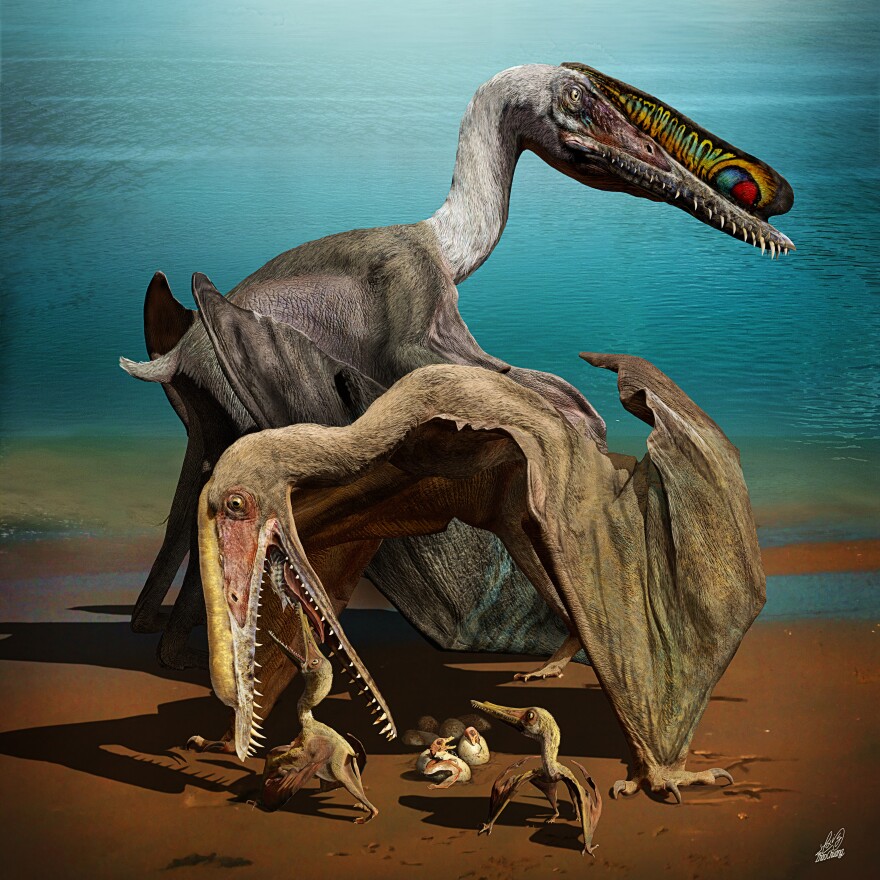An international team of paleontologists has discovered a fossil-rich site with more than 200 fossilized eggs of the Cretaceous pterosaur species Hamipterus tianshanensis in China.

Life restoration of Hamipterus tianshanensis. Image credit: Chuang Zhao.
To date, only a small handful of pterosaur eggs with a well-preserved 3D structure and embryo inside have been found and analyzed: three eggs from Argentina and five from China.
This sparse sample size was dramatically increased upon the discovery of 215 fossilized eggs of Hamipterus tianshanensis, a species of pteranodontoid pterosaur that lived about 120 million years ago (Cretaceous period) in what is now northwestern China.
/https://tf-cmsv2-smithsonianmag-media.s3.amazonaws.com/filer/28/51/28511f56-0501-4500-ab37-49d44b907518/wang6hr.jpg)
Dr. Xiaolin Wang from the Institute of Vertebrate Paleontology and Paleoanthropology, Chinese Academy of Sciences, and colleagues from China and Brazil used CT scanning to peer inside the eggs, 16 of which contain embryonic remains of varying intactness.
The most complete embryo contained a partial wing and cranial bones, including a complete lower jaw.
“The samples of thigh bones that remain intact are well-developed, suggesting that the species benefited from functional hind legs shortly after hatching,” the paleontologists said.

“However, the structure supporting the pectoral muscle appears to be underdeveloped during the embryonic stage, suggesting that newborns were likely not able to fly.”
“Therefore, we propose that newborns likely needed some parental care.”

“Based on growth marks, we estimate one of the individuals to be at least 2 years old and still growing at the time of its death, supporting the growing body of evidence that pterosaurs had long incubation periods.”
“Lastly, the fact that a single collection of embryos exhibits a range of developmental stages hints that pterosaurs participated in colonial nesting behavior.”
Source: sci.news








